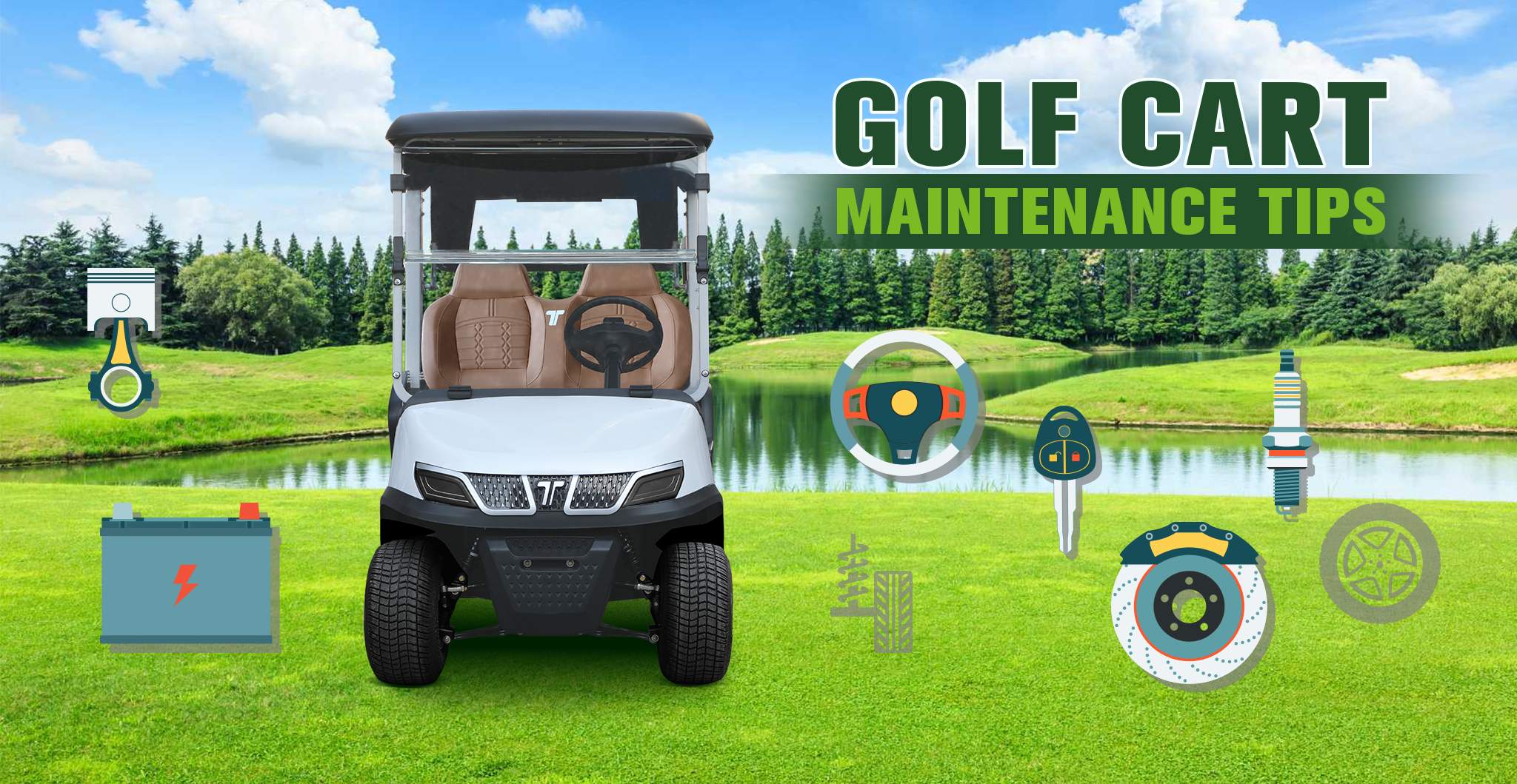In daily operation, golf carts may appear to be operated at low speeds and with light loads, but in reality, prolonged exposure to sunlight, moisture, and turf presents significant challenges to vehicle performance. Many course managers and owners often fall into seemingly habitual pitfalls during maintenance, resulting in shortened vehicle lifespans, decreased performance, and even unnecessary repair costs. Tara has identified five common mistakes in golf cart maintenance and shared more scientific maintenance strategies to help you keep your fleet in top condition.

1. “Charge Until Depleted”
Many people believe that fully draining a battery before recharging can “rejuvenate” it or extend its lifespan, but the opposite is true. The lithium or lead-acid batteries commonly used in electric golf carts have limited cycle lifespans. Overdischarging can cause uneven voltage distribution among individual cells and even lead to permanent capacity loss.
Correct: It is recommended to charge your golf cart when the remaining battery level is 30%-40%, and maintain a dry, well-ventilated charging environment. We also recommend charging after each use to maximize battery life. The Tara electric vehicle is equipped with an intelligent BMS system that automatically monitors the battery status, preventing overcharging or over-discharging and extending battery life.
2. No Maintenance Required If Long-Term Idle
During the off-season or inclement weather, golf carts often sit unused for months. Many people assume that “if they’re not used, it’s fine,” ignoring potential risks such as battery self-discharge, tire deformation, and moisture in the wiring.
Correct: Fully charge the vehicle before parking, disconnect the main power source, and recharge it every 2-3 weeks. The vehicle should be parked in a dry, shaded area and pushed or moved regularly to prevent tire deformation from pressure.
3. Neglecting Cleaning, Especially of the Chassis and Electronic Controls
Does Surface Dust Affect Performance? Grass clippings, mud, and sand are actually the biggest hidden killers of electric vehicles. Prolonged accumulation of dirt in the chassis, brake system, and electronic control module can easily lead to poor heat dissipation or short circuits.
Correct: Regularly clean the chassis with clean water (at low pressure), avoiding direct rinsing of the battery compartment and controller. Tara vehicles feature waterproof connectors and a highly protected electronic control system, effectively reducing moisture damage. However, good cleaning habits are still required.
4. Randomly Replacing Parts or Mixing Accessories
Some owners, to save costs, purchase non-genuine or off-brand parts, such as electronic controllers, battery cables, and brake pads. This may work in the short term, but it can easily lead to compatibility issues in the long term.
The Right Approach: We recommend using genuine, certified parts, especially those related to the electrical system. Tara provides genuine parts and technical support to ensure uncompromised vehicle performance and safety.
5. Neglecting Routine Inspections and Data Recording
Most faults are “cultivational” problems, such as brake wear, cable aging, and battery imbalance. Early symptoms are often subtle. Lack of regular inspections can allow small problems to accumulate, ultimately leading to costly repairs.
The Right Approach: We recommend that golf courses establish a vehicle inspection schedule, such as monthly checks of brakes, tires, batteries, and electronic control status.
The Right Maintenance Philosophy: Prevention is Better Than Repair
Tara has always believed that a good maintenance system is more important than frequent repairs. Therefore, Tara incorporated ease of maintenance into its vehicle design from the outset: modular electrical architecture, a quick-assembly and disassembly body design, and maintenance-free lithium batteries all make daily maintenance more efficient and manageable.
Through standardized maintenance procedures and data-driven monitoring, courses can effectively extend the lifecycle of their fleets, reduce total operating costs, and improve overall service quality. This is not only a management optimization, but also an investment in the course’s brand image and sustainable development.
Conclusion
Golf cart maintenance may seem simple, but it actually involves a lot of knowledge. Proper maintenance habits not only ensure longer and more stable operation, but also significantly reduce long-term expenses. Tara will continue to provide efficient, safe, and easy-to-maintain electric golf carts and intelligent management solutions to courses around the world, enabling green travel and efficient operations.
Post time: Oct-24-2025






